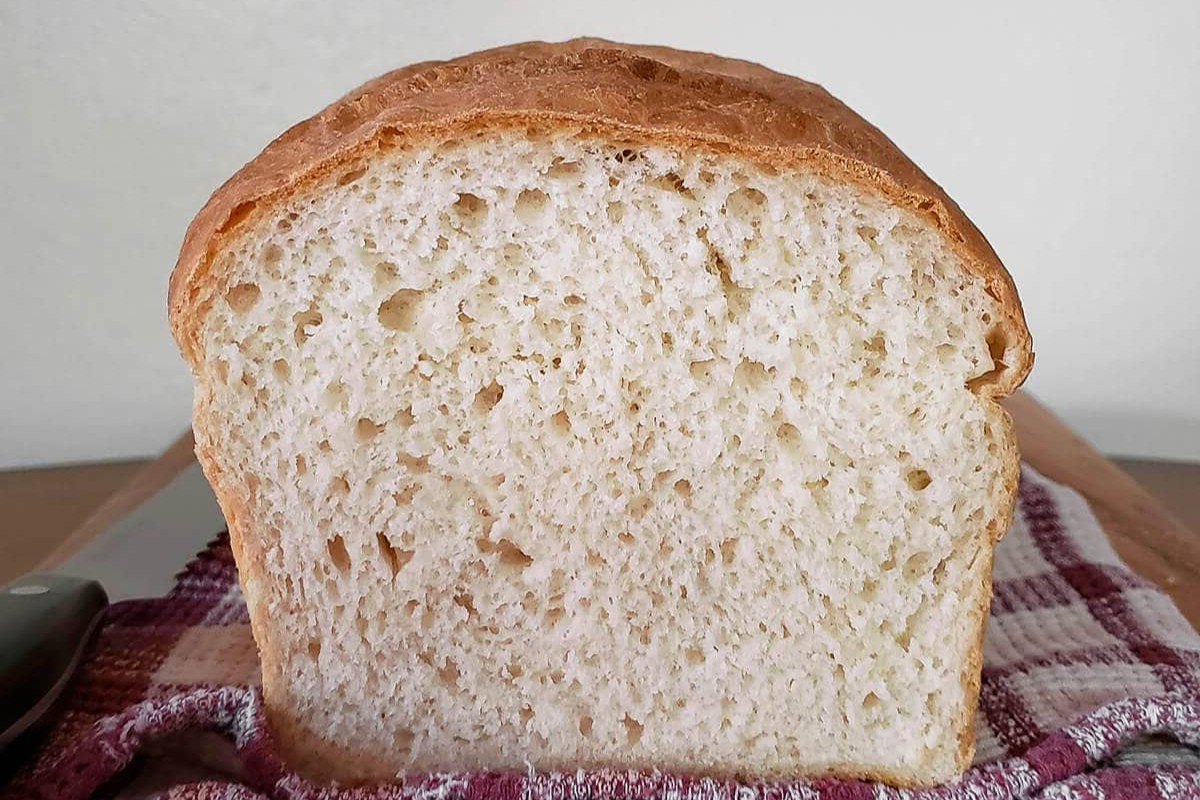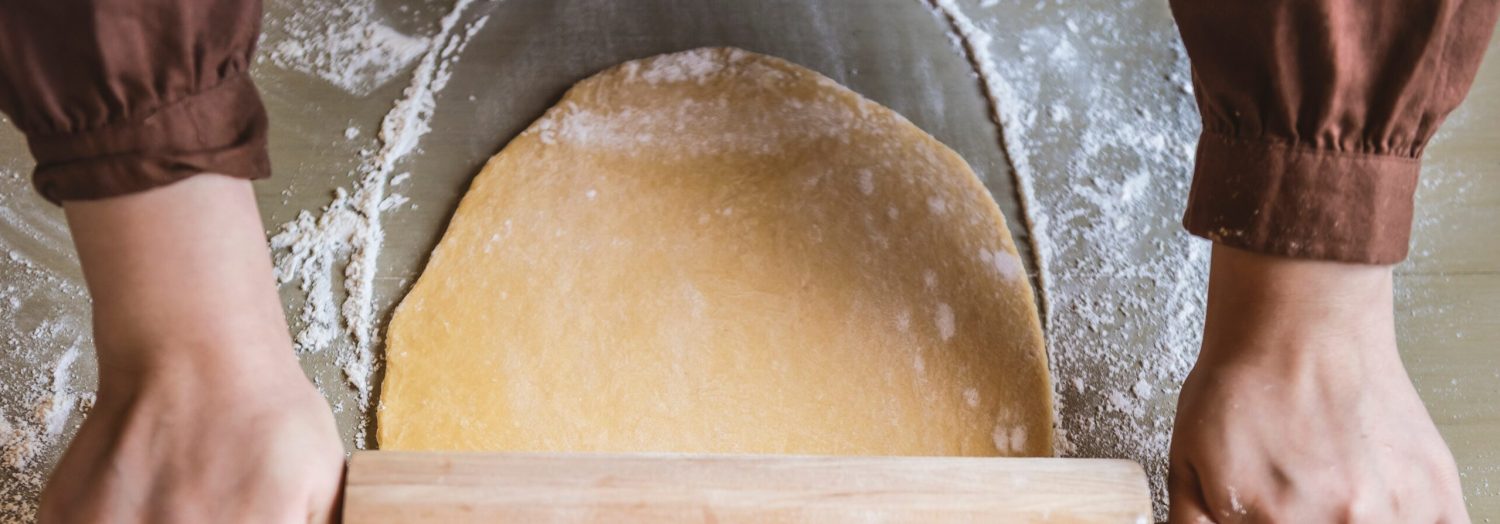There's something incredibly satisfying about baking your own bread at home. This traditional white bread recipe is perfect for beginners and experienced bakers alike. With a few simple ingredients and some patience, you can enjoy the aroma and taste of freshly baked bread right from your oven.
Most of the ingredients for this recipe are common pantry staples. However, you might need to pick up a packet of active dry yeast if you don't already have it. Active dry yeast is essential for helping the dough rise and giving the bread its light, airy texture. Make sure to check the expiration date on the yeast packet to ensure it's still active.

Ingredients for Traditional White Bread Recipe
Flour: The base of the bread, providing structure and texture.
Sugar: Feeds the yeast and adds a touch of sweetness.
Salt: Enhances flavor and controls the fermentation process.
Yeast: Helps the dough rise, creating a light and airy bread.
Water: Activates the yeast and hydrates the dough.
Butter: Adds richness and flavor to the bread.
Technique Tip for This Bread
When kneading the dough, use the heel of your hand to push it away from you, then fold it back over itself and give it a quarter turn. This technique helps develop the gluten, giving the bread its structure and chewiness. If the dough is too sticky, add a little more flour to your hands and the surface, but be careful not to add too much, as this can make the bread dense.
Suggested Side Dishes
Alternative Ingredients
all-purpose flour - Substitute with whole wheat flour: Whole wheat flour adds more fiber and nutrients, though it may result in a denser bread.
all-purpose flour - Substitute with gluten-free flour blend: For those with gluten intolerance, a gluten-free flour blend can be used, though the texture may differ.
sugar - Substitute with honey: Honey adds a natural sweetness and moisture to the bread, but you may need to slightly reduce the water content.
sugar - Substitute with maple syrup: Maple syrup provides a unique flavor and natural sweetness, similar to honey.
salt - Substitute with sea salt: Sea salt can be used for a slightly different mineral content and flavor profile.
active dry yeast - Substitute with instant yeast: Instant yeast can be used in the same quantity and does not need to be dissolved in water first.
active dry yeast - Substitute with sourdough starter: Sourdough starter can be used for a tangy flavor and natural leavening, though it requires a longer fermentation time.
warm water - Substitute with milk: Milk adds richness and a softer crumb to the bread.
warm water - Substitute with plant-based milk: For a dairy-free option, plant-based milk such as almond or soy can be used.
butter - Substitute with olive oil: Olive oil provides a different flavor and is a healthier fat option.
butter - Substitute with coconut oil: Coconut oil adds a subtle coconut flavor and is a good dairy-free alternative.
Alternative Recipes Similar to This Bread
How to Store or Freeze Your Bread
- To keep your traditional white bread fresh, wrap it tightly in plastic wrap or place it in a resealable plastic bag. Store at room temperature for up to 3 days.
- For longer storage, wrap the bread in aluminum foil and place it in a freezer-safe bag. Freeze for up to 3 months.
- When ready to use, thaw the bread at room temperature. For a fresher taste, you can warm it in the oven at 350°F (175°C) for about 10 minutes.
- To prevent the bread from drying out, avoid storing it in the refrigerator, as this can cause it to become stale more quickly.
- If you prefer to freeze individual slices, place a piece of parchment paper between each slice before wrapping and freezing. This makes it easier to take out only what you need.
- For a quick refresh, toast the thawed slices in a toaster or warm them in a skillet over medium heat for a few minutes on each side.
- To maintain the bread's crusty exterior, you can reheat it in the oven directly from the freezer. Preheat the oven to 375°F (190°C) and bake for about 15-20 minutes.
- If you notice any signs of mold, discard the bread immediately to avoid contamination.
How to Reheat Leftovers
Preheat your oven to 350°F (175°C). Wrap the bread in aluminum foil to prevent it from drying out. Place it directly on the oven rack and heat for about 10-15 minutes until warm.
For a quick reheat, use a microwave. Place a slice of bread on a microwave-safe plate. Cover it with a damp paper towel to retain moisture. Microwave on medium power for 10-15 seconds. Check and repeat if necessary.
Utilize a toaster for individual slices. Simply place the bread in the toaster and toast to your desired level of warmth and crispiness.
If you have a toaster oven, preheat it to 350°F (175°C). Place the bread on the rack or a baking sheet. Heat for about 5-10 minutes until warm.
For a stovetop method, heat a skillet over medium heat. Place the bread in the skillet and cover with a lid. Heat for 2-3 minutes on each side until warm and slightly crispy.
To reheat bread using steam, boil a small amount of water in a pot. Place a steaming basket over the pot and put the bread in the basket. Cover and steam for 1-2 minutes until warm.
Essential Tools for This Recipe
Mixing bowl: A large bowl used to combine the ingredients and mix the dough.
Measuring cups: Essential for accurately measuring the flour and water.
Measuring spoons: Used to measure the sugar, salt, and yeast precisely.
Wooden spoon: Handy for mixing the ingredients together before kneading.
Damp cloth: Used to cover the dough while it rises, keeping it moist.
Floured surface: A clean surface dusted with flour to prevent the dough from sticking while kneading.
Loaf pan: A greased pan where the dough is placed to shape and bake the bread.
Oven: Preheated to 375°F (190°C) for baking the bread.
Wire rack: Used to cool the bread after it’s baked, allowing air to circulate around it.
Pastry brush: Useful for greasing the loaf pan and brushing melted butter on the dough if desired.
Thermometer: Optional, but can be used to check the internal temperature of the bread to ensure it’s fully baked.
Time-Saving Tips for Making This Bread
Pre-measure ingredients: Measure out all flour, sugar, salt, and butter before starting to streamline the process.
Use a stand mixer: Utilize a stand mixer with a dough hook to mix and knead the dough, saving you time and effort.
Warm environment: Let the dough rise in a slightly warm oven (turned off) to speed up the rising process.
Double batch: Make a double batch and freeze one loaf for later, reducing future prep time.
Quick cool: Cool the bread on a wire rack near an open window to speed up the cooling process.

Traditional White Bread Recipe
Ingredients
Main Ingredients
- 4 cups All-purpose flour
- 2 tablespoon Sugar
- 1 tablespoon Salt
- 1 packet Active dry yeast
- 1.5 cups Warm water
- 2 tablespoon Butter, melted
Instructions
- 1. In a large mixing bowl, combine warm water, sugar, and yeast. Let it sit for 5 minutes until frothy.
- 2. Add flour, salt, and melted butter to the yeast mixture. Mix until a dough forms.
- 3. Knead the dough on a floured surface for about 10 minutes until smooth and elastic.
- 4. Place the dough in a greased bowl, cover with a damp cloth, and let it rise in a warm place for about 1 hour or until doubled in size.
- 5. Punch down the dough and shape it into a loaf. Place it in a greased loaf pan.
- 6. Cover and let it rise again for about 30 minutes.
- 7. Preheat the oven to 375°F (190°C). Bake the bread for 30 minutes or until golden brown.
- 8. Remove from the oven and let it cool on a wire rack before slicing.
Nutritional Value
Keywords
More Amazing Recipes to Try 🙂
- Navajo Fry Bread Recipe30 Minutes
- Marinated Flank Steak Recipe25 Minutes
- White Bread for Bread Machine Recipe3 Hours 10 Minutes
- Shirley Temple Recipe5 Minutes
- Margarita Recipe5 Minutes
- Chicken Alfredo Recipe35 Minutes
- Tuna Melt Recipe15 Minutes
- Grilled Hamburgers Recipe20 Minutes

Leave a Reply